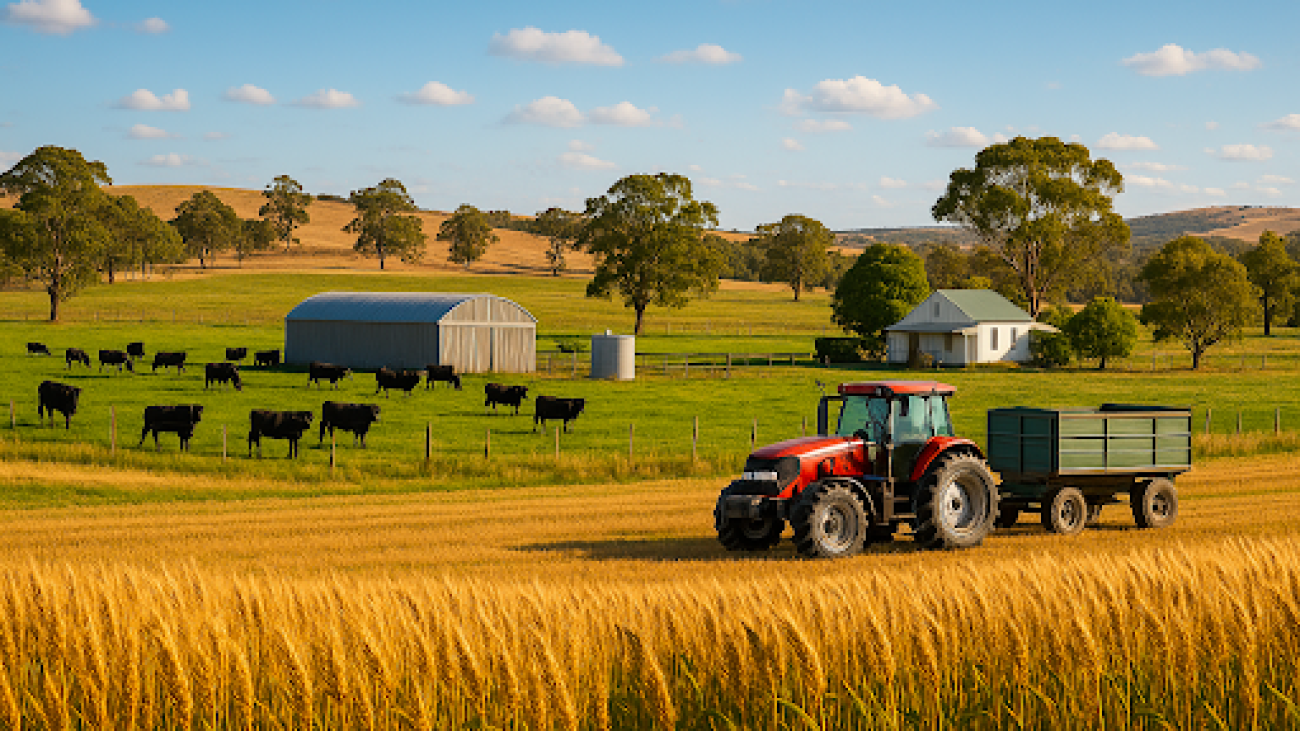Climate Change and Insurance Explained
Learn how climate change impacts global risks and why the right insurance is vital to protect homes, businesses, and farms against extreme events.
Climate change is no longer a distant concern. It is a reality reshaping communities, economies, and environments worldwide. Rising temperatures, extreme weather events, and shifting climate patterns are creating new risks that affect every corner of society. For individuals, businesses, and farmers, one of the most pressing questions is how to manage these risks effectively.
This is where climate change insurance becomes increasingly important. Insurance plays a critical role in helping people recover from natural disasters, adapt to evolving conditions, and safeguard the things that matter most. This blog explores how climate change is transforming risk worldwide, why the correct insurance is essential, and what steps individuals and organisations can take to prepare.
The Global Impact of Climate Change
Extreme Weather Events on the Rise
Around the world, natural disasters are becoming more frequent and more severe. Bushfires in Australia, hurricanes in the United States, floods in Europe, and prolonged droughts in Africa all highlight the destructive power of a changing climate. According to the Intergovernmental Panel on Climate Change (IPCC), global temperatures are likely to exceed 1.5°C above pre-industrial levels within the next two decades, leading to profound environmental consequences.
Economic Costs
The financial toll of climate change is staggering. The World Bank estimates that climate-related disasters already cost the global economy hundreds of billions of dollars each year. Infrastructure damage, lost agricultural production, and disruptions to supply chains all contribute to these growing expenses. Without proper insurance, individuals and businesses bear much of the financial burden.
Social and Humanitarian Impacts
Beyond the economic numbers are the human stories. Communities are displaced by rising sea levels. Farmers lose entire crops to drought. Families see their homes destroyed by floods. Climate change is not just an environmental issue; it is a humanitarian challenge requiring global cooperation and local resilience.
Why Insurance Matters in a Changing Climate
Insurance is a cornerstone of resilience. It cannot stop floods, fires, or storms from happening, but it can help people recover when they do. By pooling risk across many policyholders, insurance spreads the financial impact of disasters, ensuring that no single individual or business bears the full cost alone.
Financial Security
For households, insurance ensures that a flood-damaged home can be repaired or rebuilt. For farmers, it means recovering from a ruined harvest. For businesses, it provides a safety net to resume operations after a disaster. Without the correct insurance, recovery can be slow, costly, or impossible.
Encouraging Risk Management
Insurance companies also play a proactive role in climate adaptation. By adjusting premiums based on risk, they encourage individuals and organisations to take preventive measures, such as installing fire-resistant building materials, improving flood defences, or maintaining resilient farming practices.
Protecting Investments
For investors and lenders, insured assets are safer bets. Climate change insurance protects not only property owners but also the broader financial system, which relies on stable, insured assets to function effectively.
Types of Insurance Relevant to Climate Change
Property and Home Insurance
With floods, storms, and fires on the rise, home and property insurance is essential. Policies should be carefully reviewed to ensure they cover natural disasters, as exclusions for floods or bushfires may leave households exposed.
Business Interruption Insurance
When natural disasters strike, businesses often face downtime. Business interruption insurance helps cover lost income and ongoing expenses until operations can resume, providing stability in uncertain times.
Agricultural Insurance
Farmers face unique risks from droughts, heatwaves, and pests. Agricultural insurance — including crop and livestock cover, is crucial to maintaining food security and protecting rural livelihoods.
Travel Insurance
As climate events disrupt transport and tourism, travel insurance becomes more important. Cover for cancellations, delays, or medical emergencies caused by extreme weather ensures travellers are not left stranded.
Life and Health Insurance
Climate change also affects health, increasing risks of heat stress, respiratory illness, and disease outbreaks. Life and health insurance provide additional layers of financial security in the face of these emerging challenges.
Regional Perspectives: Climate Risks Worldwide
Australia
Australia is highly vulnerable to bushfires, droughts, and floods. The Black Summer bushfires of 2019–2020 caused insured losses of over $2.3 billion. As extreme events become more common, comprehensive rural and urban insurance cover is vital.
United States
The US faces hurricanes, wildfires, and severe storms. In 2023 alone, climate-related disasters caused over $100 billion in damages. Flood insurance is particularly important, as many standard property policies exclude it.
Europe
Flooding has been a growing problem across Europe, with devastating events in Germany and Belgium in recent years. Insurance in these regions increasingly focuses on flood and storm resilience.
Africa
In many parts of Africa, droughts are the most pressing climate threat, affecting food security and livelihoods. Microinsurance products are emerging to provide affordable protection for smallholder farmers.
Asia-Pacific
From typhoons in the Philippines to rising seas in Pacific Island nations, Asia-Pacific countries face diverse climate risks. Insurance markets in the region are adapting rapidly to address these needs.
The Challenges of Climate Change Insurance
While insurance is essential, climate change presents challenges for insurers and policyholders alike.
- Rising Premiums
As risks increase, so too do premiums. In some high-risk areas, insurance may become prohibitively expensive. - Uninsurable Areas
Some regions may eventually be deemed uninsurable, particularly those repeatedly exposed to disasters such as floods or cyclones. - Coverage Gaps
Not all policies cover climate-related risks. Exclusions for flood, bushfire, or storm surge can leave policyholders vulnerable. - Awareness and Accessibility
In developing regions, access to affordable insurance remains limited, leaving communities more vulnerable to climate shocks.
How to Choose the Right Climate Change Insurance
Selecting the correct cover requires careful planning and expert guidance. Here are the steps to follow:
- Identify Risks: Assess the specific climate risks in your location, such as floods, fires, droughts, or storms.
- Check Policy Exclusions: Ensure that your insurance covers natural disasters relevant to your area.
- Consider Comprehensive Packages: Bundling property, liability, and business interruption cover may provide broader protection.
- Work with a Broker: Insurance brokers can help tailor policies to individual needs and negotiate competitive rates.
- Review Policies Regularly: As climate risks evolve, policies should be updated to ensure continued relevance.
The Role of Insurance in Climate Adaptation
Insurance does more than provide financial relief; it helps societies adapt to climate change. By rewarding risk-reducing behaviour, insurers encourage stronger building standards, sustainable land management, and proactive disaster planning. In this way, insurance becomes part of the broader strategy for climate resilience.
Governments and insurers are also exploring partnerships to create national disaster insurance schemes, ensuring coverage remains affordable and accessible even as risks rise.
Looking Ahead
The world is at a crossroads. Climate change will continue to reshape risks across every continent, but with the right insurance strategies in place, individuals and communities can remain resilient.
Insurance cannot prevent disasters, but it ensures recovery is possible. For households, businesses, and farmers alike, climate change insurance is no longer optional; it is essential.
Climate change is the defining challenge of our time, affecting not only the environment but also economies, communities, and livelihoods. The risks are immense, but so too is our capacity to adapt. Insurance is a crucial component of this adaptation, providing financial security, fostering resilience, and enabling societies to rebuild after a disaster.
The key is to ensure you have the correct insurance in place, which covers the realities of a changing climate. Whether you are a homeowner, farmer, or business owner, taking the time to review and update your policies is one of the most important steps you can take to protect your future.
Contact Business Insurance Consulting
For tailored advice on climate change insurance and protection against natural disasters, reach out to Business Insurance Consulting. Their expertise can help you secure the right cover for your needs.


